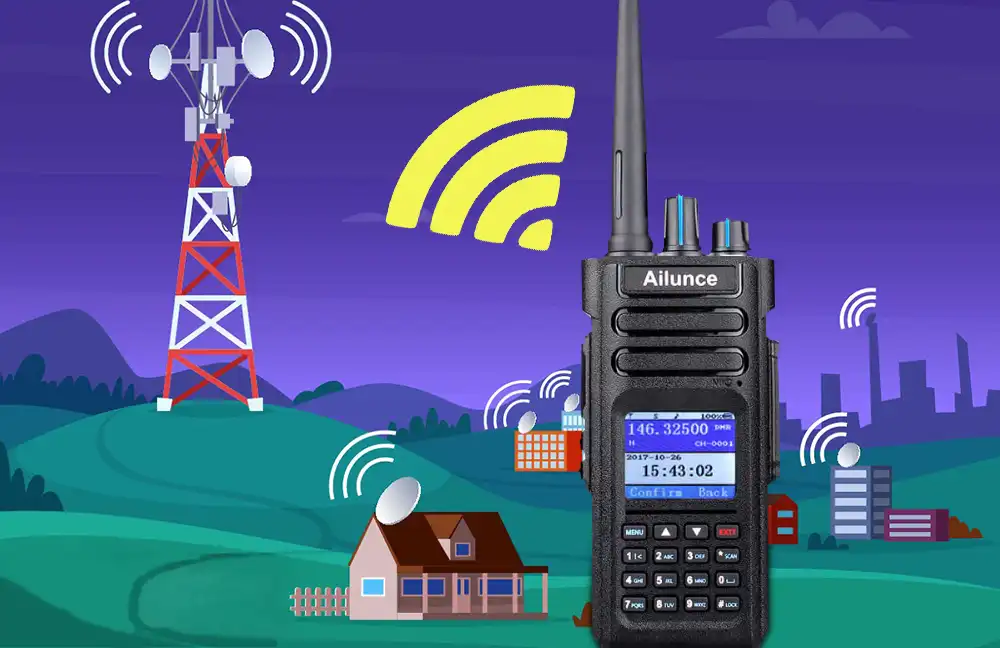Introduction
Have you ever wondered why, in a world dominated by smartphones and high-speed internet, two-way radios (walkie talkies) are making a surprising comeback? It might seem counterintuitive at first, but there’s a good reason these trusty devices are regaining popularity. Let’s dive into the world of two-way radios and discover why they’re becoming essential in our digital age.
The Evolution of Communication Devices
Early Communication Devices
Back in the day, communication was a lot more complicated. People relied on letters, telegrams, and wired telephones to stay in touch. Each method had its limitations, from the slow speed of letters to the tethered nature of wired phones.
The Rise of Mobile Phones
Then came the revolution of mobile phones. Suddenly, communication was fast, wireless, and portable. Mobile phones became the go-to device for personal and business communication, thanks to their convenience and ever-expanding capabilities.
Digital Communication Today
Today, our communication landscape is dominated by digital devices and platforms. Smartphones, tablets, laptops, and various apps allow us to connect instantly across the globe. However, even with all these advancements, there are scenarios where these digital marvels fall short.
What Are Two-Way Radios?
Basic Functionality
Two-way radios, commonly known as walkie talkies, are handheld devices that allow instant voice communication over radio frequencies. They operate on a push-to-talk system, meaning you press a button to speak and release it to listen.
Key Features
Two-way radios come with several features that make them stand out. They are designed for real-time communication, often have robust battery life, and can function without relying on cellular networks. Additionally, they are typically built to be durable and withstand harsh conditions.
Why Two-Way Radios Are Making a Comeback
Reliability in Emergencies
When disaster strikes, cell towers can become overwhelmed or fail entirely. Two-way radios provide a reliable alternative for communication, especially in emergency situations. They don’t depend on cellular infrastructure, making them indispensable for first responders and emergency personnel.
Durability and Longevity
Unlike fragile smartphones, two-way radios are built to last. They are often water-resistant, dustproof, and able to withstand drops and rough handling. This durability makes them ideal for environments where other devices might not survive.
Cost-Effectiveness
Not everyone needs a fancy smartphone with a high price tag and an expensive data plan. Two-way radios offer a cost-effective solution for simple, reliable communication. They require no monthly fees or contracts, making them an economical choice for many users.
Privacy and Security
Two-way radios offer a level of privacy that smartphones can’t always guarantee. Communication over radio frequencies can be encrypted, providing a secure channel for sensitive information. This makes them a preferred choice for industries where privacy is paramount.
Ease of Use
Let’s face it, not everyone is tech-savvy. Two-way radios are incredibly straightforward to use. With a simple push-to-talk mechanism, they eliminate the learning curve associated with more complex digital devices.
No Dependency on Cell Networks
One of the biggest advantages of two-way radios is their independence from cellular networks. In remote areas where cell coverage is sparse or non-existent, two-way radios remain functional. This makes them perfect for outdoor enthusiasts, hikers, and adventurers.
Industries Benefiting from Two-Way Radios
Public Safety and Emergency Services
For police, firefighters, and emergency medical teams, reliable communication is crucial. Two-way radios ensure these professionals can coordinate effectively during emergencies, enhancing their ability to save lives and manage crises.
Construction and Manufacturing
On construction sites and in manufacturing plants, communication is key to maintaining safety and efficiency. Two-way radios allow workers to communicate quickly and clearly, reducing the risk of accidents and improving operational workflows.
Outdoor and Adventure Activities
Whether you’re camping, hiking, or engaging in extreme sports, two-way radios provide a reliable means of communication. They help keep groups connected in areas where cell phones might not work, enhancing safety and coordination.
Events and Hospitality
In the events and hospitality industry, seamless communication is essential for providing excellent service. Staff can stay connected, coordinate tasks, and respond quickly to guest needs using two-way radios, ensuring smooth operations.
The Future of Two-Way Radios in the Digital Age
Integration with Modern Technology
Two-way radios are not stuck in the past; they’re evolving with the times. Modern two-way radios are integrating with digital technologies, offering features like GPS tracking, Bluetooth connectivity, and compatibility with smartphone apps. This integration enhances their functionality and makes them more versatile than ever.
Conclusion
In an era where digital communication is king, two-way radios are proving their worth by offering reliability, durability, cost-effectiveness, and ease of use. Their resurgence in popularity across various industries and activities underscores their importance in our increasingly connected world. As technology continues to evolve, so too will two-way radios, ensuring they remain a vital tool for communication in the digital age.
FAQs
1. How far can two-way radios communicate?
The range of two-way radios depends on the model and environmental factors. Basic models can communicate over a few miles, while high-end models can cover up to 35 miles in ideal conditions.
2. Are two-way radios legal to use?
Yes, two-way radios are legal to use, but there are regulations regarding the frequencies and power levels that can be used without a license. It’s important to check local regulations to ensure compliance.
3. Can two-way radios be used internationally?
Yes, but you need to be aware of international regulations and frequency allocations, which can vary by country. Some radios are designed to work globally, while others are region-specific.
4. Do two-way radios work indoors?
Yes, two-way radios work indoors, but the range can be affected by obstacles such as walls and buildings. Higher-powered radios and those with better penetration capabilities perform better in indoor environments.
5. Can I use my smartphone as a two-way radio?
Yes, there are apps available that turn smartphones into two-way radios using internet connections. However, they rely on cellular or Wi-Fi networks, unlike traditional two-way radios which operate independently of these networks.

